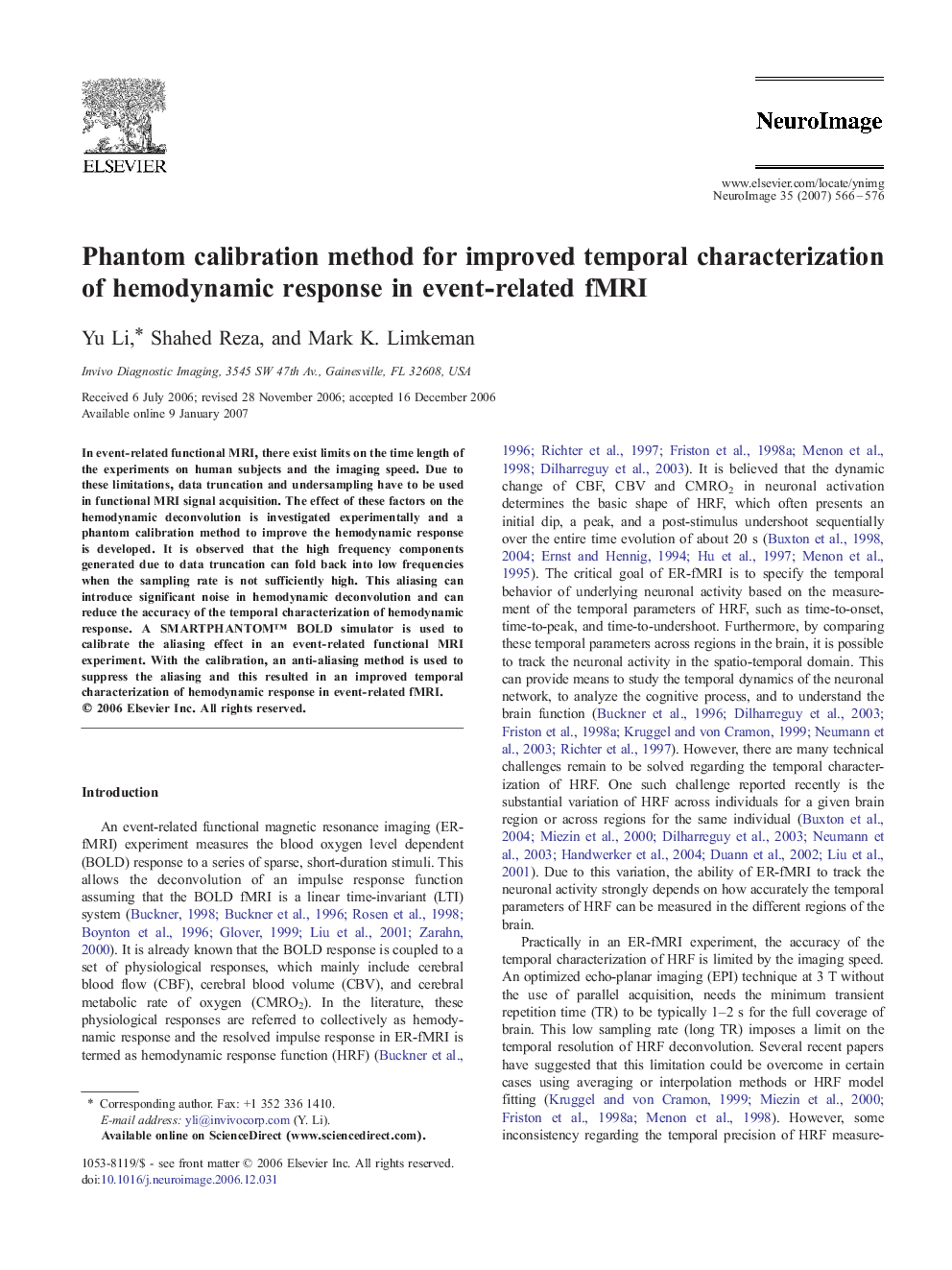| Article ID | Journal | Published Year | Pages | File Type |
|---|---|---|---|---|
| 6040657 | NeuroImage | 2007 | 11 Pages |
Abstract
In event-related functional MRI, there exist limits on the time length of the experiments on human subjects and the imaging speed. Due to these limitations, data truncation and undersampling have to be used in functional MRI signal acquisition. The effect of these factors on the hemodynamic deconvolution is investigated experimentally and a phantom calibration method to improve the hemodynamic response is developed. It is observed that the high frequency components generated due to data truncation can fold back into low frequencies when the sampling rate is not sufficiently high. This aliasing can introduce significant noise in hemodynamic deconvolution and can reduce the accuracy of the temporal characterization of hemodynamic response. A SMARTPHANTOM⢠BOLD simulator is used to calibrate the aliasing effect in an event-related functional MRI experiment. With the calibration, an anti-aliasing method is used to suppress the aliasing and this resulted in an improved temporal characterization of hemodynamic response in event-related fMRI.
Related Topics
Life Sciences
Neuroscience
Cognitive Neuroscience
Authors
Yu Li, Shahed Reza, Mark K. Limkeman,
